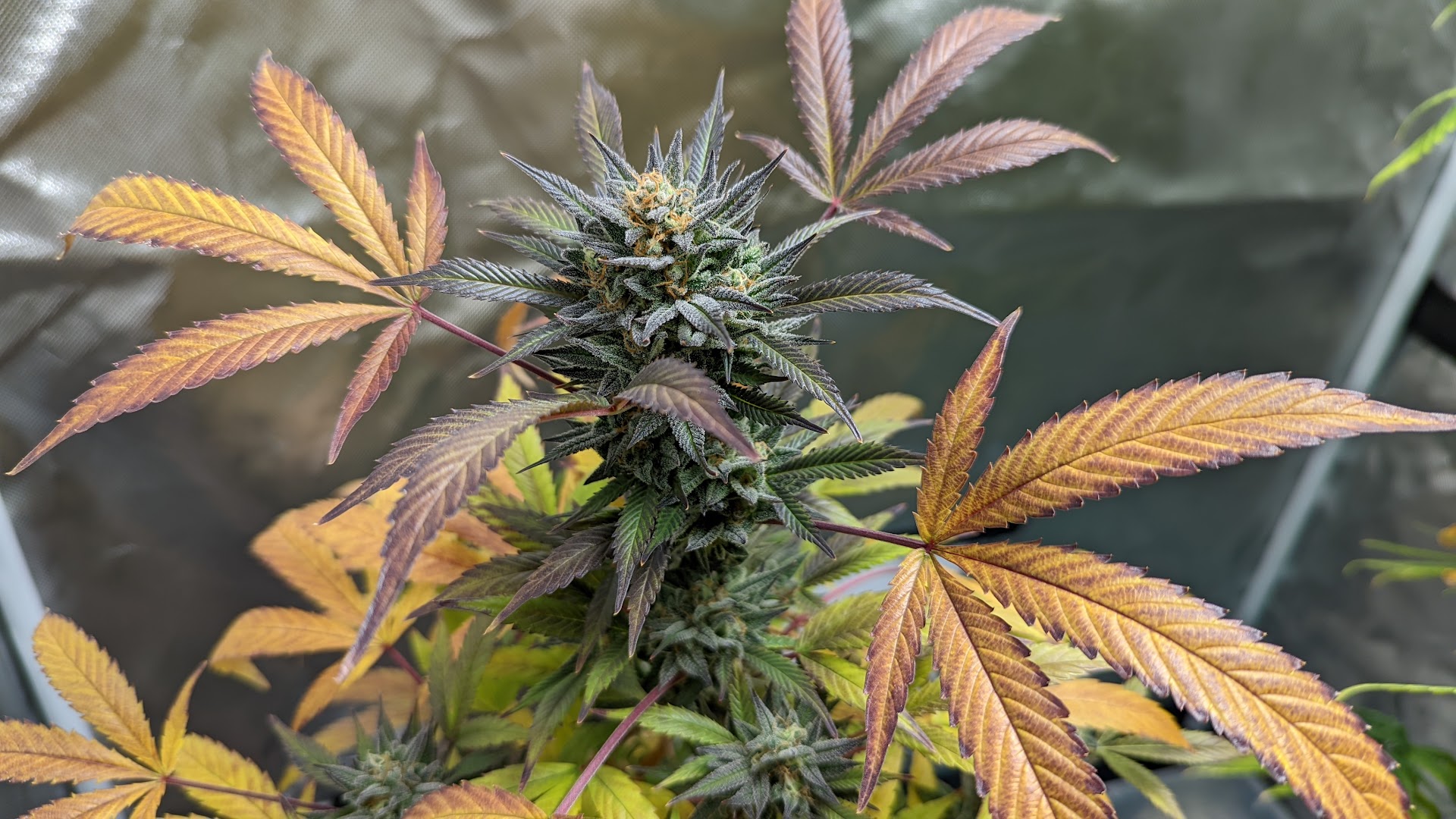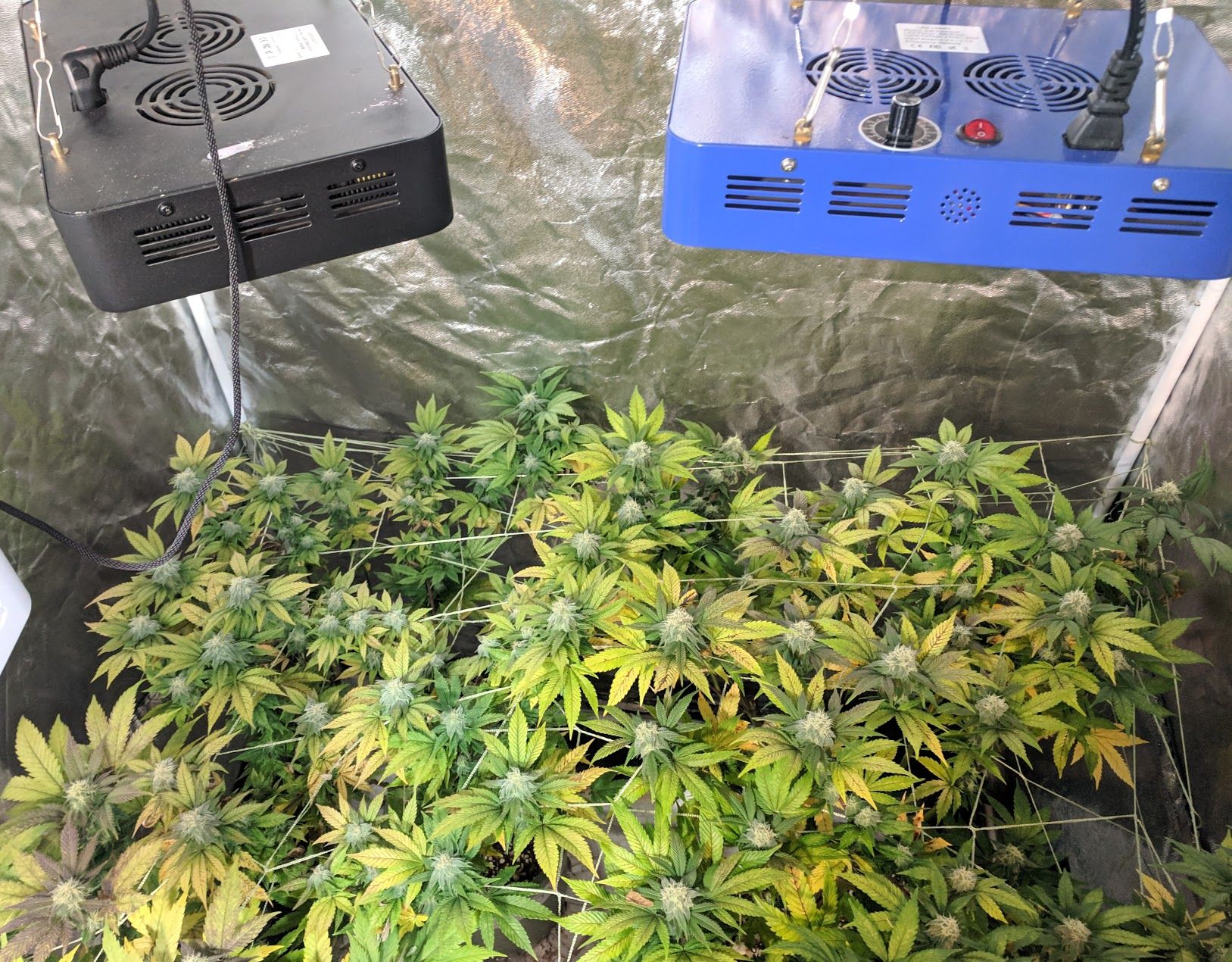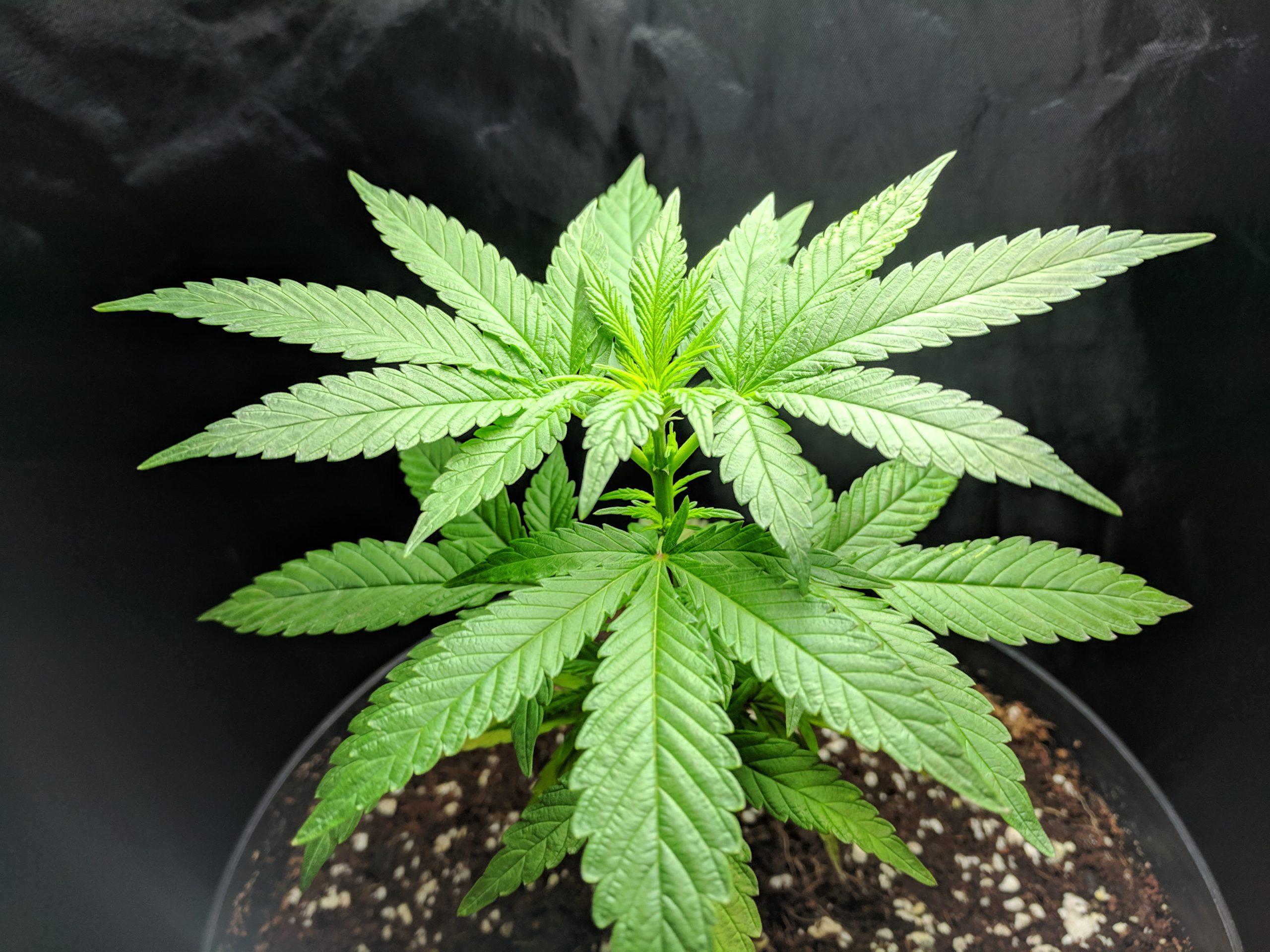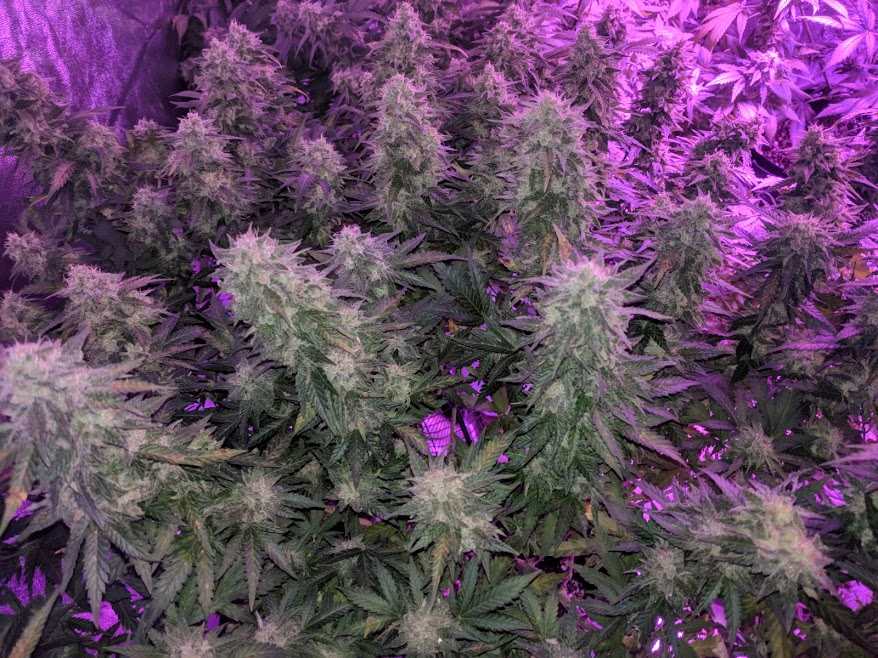In this guide, we’ll look at how low stress training (LST) is used to increase flower production in cannabis. Then we’ll show you step by step how to combine topping, training and pruning to maximize your yield. This is a must-know for farmers who want to grow more weed.
What is apical dominance?
Apical dominance is a tendency, found in many plants, to put the majority of their energy into the top-most growth. In natural settings, it helps them reach precious sunlight in crowded environments. It’s also what gives cannabis its natural Christmas tree shape, with one large bud growing out of the top (the cola) and much smaller buds on the side branches.

How do you break apical dominance?
The key to breaking a plant’s tendency towards putting all its energy into the topmost growth is to change what is top-most. A simple way to do that is to pull the cola down so that it is no longer the top-most part of the plant. This will cause the side branches to now be the top-most and the plant will divert energy from the cola to the side branches – which will, in turn, shift their growth in the direction of the new up.

This process of breaking apical dominance is called ‘Low Stress Training’ because it doesn’t involve harming the plant. Topping & FIM’ing are higher stress techniques to break apical dominance because they require cutting the plants growth tips, often causing the plant to stop growing for several days. This is why higher stress techniques are not recommended for fast auto-flowering strains, which need all the vegetative growth time they can get. LST is generally a safe way to increase yields for all strains.
How do I train cannabis?
Vegetating cannabis plants are very flexible and can be trained over time to grow in the direction you want them to. To do this, Use plastic coated wire or twine that won’t cut into the plant and tie a loop around the plant’s stem and connect the other end to an anchor point. Most commonly, farmer’s use the pot as the anchor point. This is a good idea, since it moves with the plant.

If you are tying your plant down, only apply gentle pressure on your plant or you might snap a branch off. A good way to avoid this is to only move the plant a little at a time by tightening the tie downs a little each day until you have it where you want it.
Why should I train cannabis?
There are lots of reasons to train cannabis, the best of which is that it can drastically increase your yields. Instead of one huge bud at the top, you get many big buds. The new shape works better for indoor grow lights and results in a higher overall yield. This is magnified even further when combined with topping.

For indoor grows, especially home-growers, training is an important step for making the best use of your grow space. Some cannabis plants get extremely tall – up to 20′ (6.6m) tall – so you will need a way to control both vertical and horizontal growth.
When should I train cannabis?
You can train cannabis throughout the adult vegetative state and into early flowering. Young seedlings should be left to grow for the first 3 to 4 weeks. Flowering plants turn rigid and are more likely to snap under pressure. As a rule of thumb, its best to do all the training in the vegetative phase and have your plant trained the way you want before you put it into flower.
Read more about the stages of life for cannabis in the lifecycle guide.
LST+Pruning+Topping Technique
The very best way to improve the yields of a home grow is to combine low stress training with topping and pruning. Follow the 4 steps below and you can easily quadruple your yield. Visit our topping guide to learn all about topping and FIM’ing.
Step 1: Top Once
Topping the plant breaks apical dominance by removing the top growth tip, causing the plant to divert all of that energy into side branching. Effectively, this step results in forking the plant’s main growth stem into two.

For pruning, I really love these shears.
Step 2: Top again
Repeating the process will result in more forks in the main growth stems. Lower branches will also begin growing larger than they would have if the plant had not been topped.

Can I top or FIM Side Branches?
Yes. Cutting or pinching side branches will cause them to fork just like it does to the cola. The overall effect will be a bushier plant with even more bud sites.
Step 3: Tie Down Growth Tips
Even though all the bud sites on the plant will perform better due to topping the main cola, there’s still more we can do to pump them up larger. In order to expose lower sites to more light and air, we will tie down the top-most growth tips.

Use light gauge, plastic coated garden wire to tie down the plant’s branches. If the wire isn’t plastic coated, it will likely cut into the plant.
This is a continual process, as new bud sites reach up into the air just tie them down so they are even or below the canopy height. Tying the tallest growth down will expose new sites to light and air and continue encouraging it to spread energy evenly across the sites. In the end, you want an even canopy across the top to make best use of indoor grow lights.

Step 4: Prune Lower Growth
This step is optional, but will help improve your overall yield. Lower bud sites don’t get a lot of air or light, so they tend to produce loose cotton-like buds without a lot of THC. Removing the small bud sites from the bottom of the plant allows the plant to divert that energy to the bud sites at the top of the canopy.
Cutting off bud sites to improve yield sounds counter intuitive, but these sites don’t produce high quality bud and are often discarded or thrown into the shake bucket at harvest anyway. Its better to remove those sites early so that the plant can concentrate on energy on the sites that do get plenty of light and air.

The secondary benefit of pruning the lower sites is that it improves airflow, even in a crowded grow-space, since it allow the air to circulate under the canopy.
Step 5: Bigger Yields!
This multi-step technique produces documented results in increasing yields for indoor grows,which is why most farmers use it. It can be scary to cut or bend your plant, but its worth it in the end. Cannabis plants in the vegetative phase are extremely robust and can come back from almost anything. If a farmer’s goal is to maximize yields, then this one is a must-do.
These LSD plant (left) and Acapulco Gold (right) – both strains by seed breeder Barney’s Farm – have been topped multiple times, and were trained to produce a flat canopy with multiple large colas each. These plants produced 6 ounces each of high quality bud after 60 days vegging and 65 days of flowering.






